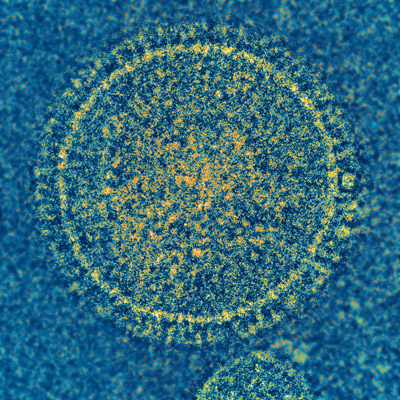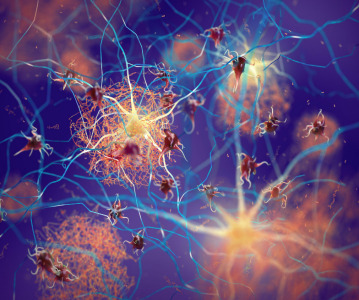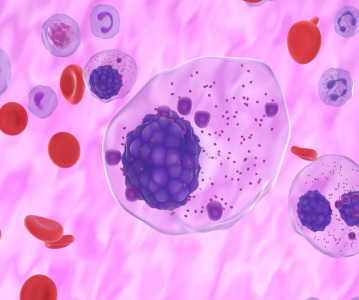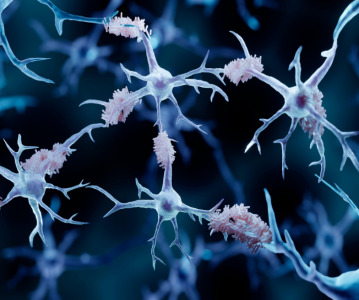NIH Scientists Develop Candidate Vaccine Against Respiratory Syncytial Virus

An experimental vaccine to protect against respiratory syncytial virus (RSV), a leading cause of illness and hospitalisation among very young children, elicited high levels of RSV-specific antibodies when tested in animals, according to a report in the journal Science.
Early-stage human clinical trials of the candidate vaccine are planned. Scientists from the Vaccine Research Center (VRC), National Institute of Allergy and Infectious Diseases (NIAID), part of the National Institutes of Health, built on their previous findings about the structure of a critical viral protein to design the vaccine. The team was led by Peter D. Kwong, PhD, and Barney S. Graham, MD, PhD.
“Many common diseases of childhood are now vaccine-preventable, but a vaccine against RSV infection has eluded us for decades,” said NIAID Director Anthony S. Fauci, MD. “This work marks a major step forward. Not only does the experimental vaccine developed by our scientists elicit strong RSV-neutralizing activity in animals, but, more broadly, this technique of using structural information to inform vaccine design is being applied to other viral diseases, including HIV/AIDS.”
Earlier this year, the VRC team obtained atomic-level details of an RSV protein — called the fusion (F) glycoprotein — bound to a broadly neutralizing human RSV antibody. The protein–antibody complex gave scientists their first look at the F glycoprotein as it appears before it fuses with a human cell. In this pre-fusion shape, F glycoprotein contains a region vulnerable to attack by broadly neutralizing antibodies (antibodies able to block infection from the common strains of RSV).
Once RSV fuses with a cell, this vulnerable area, named antigenic site zero by the researchers, is no longer present on the rearranged F protein. In natural RSV infection, the immune system produces antibodies against both the pre-fusion and post-fusion forms of F glycoprotein. Buut the antibodies to antigenic site zero, which is only present on the pre-fusion form, have much stronger neutralizing activity. Therefore, a vaccine against RSV would have greater chance of success by eliciting antibodies directed at F glycoprotein in its pre-fusion configuration.
In their current publication, Drs Kwong and Graham describe how they used this structural information to design and engineer F glycoprotein variants that retained antigenic site zero even when no antibody was bound to it. The goal was to create stable variants that could serve as the foundation for a vaccine capable of eliciting a potent antibody response. The researchers designed more than 100 variants; of these, three were shown by X-ray crystallography to retain the desired structure. The engineered variants were then used as vaccines in a series of experiments in mice and rhesus macaques.
In mice and macaques, the researchers found that the more stable the protein, the higher the levels of neutralizing antibodies elicited by vaccination. The levels of antibody made in response to one of the engineered F glycoproteins were more than 10 times higher than those produced following vaccination with post-fusion F glycoprotein and well above levels needed to protect against RSV infection.
“Here is a case in which information gained from structural biology has provided the insight needed to solve an immunological puzzle and apply the findings to address a real-world public health problem,” said Dr Graham. He and the VRC scientists are continuing to refine the engineered F glycoproteins and hope to launch early-stage human clinical trials of a candidate RSV vaccine as soon as clinical grade material can be manufactured, a process that takes about 18–24 months.
“Previously, structure-based vaccine design held promise at a conceptual level,” said Dr Kwong. “This advance delivers on that promise and sets the stage for similar applications of structure-guided design to effective vaccines against other pathogens.”
Dr Fauci added: “This latest advance underscores the advantages of the VRC’s organizational design, where experts in RSV virology, vaccinology and clinical studies, such as Dr Graham, are in daily contact with Dr Kwong and others who are experts in structural biology. Such close collaboration across disciplines allows for rapid testing of new approaches to a given problem.”
Related News
-
News BioNTech to begin mRNA vaccine manufacturing in Rwanda by 2025
German biotechnology company BioNTech has stated their intentions to begin production at their mRNA vaccine factory in Rwanda by 2025, which will mark the first foreign mRNA vaccine manufacturing site on the continent of Africa. -
News Identifying Alzheimer’s Disease biomarker proteins with whole blood tests
A University of Manchester spin-out pharmaceutical company, PharmaKure, has reported successful study results for the quantification of Alzheimer’s Disease biomarker proteins with a whole blood test. -
News Bill & Melinda Gates Foundation to boost mRNA vaccine initiatives in Africa with USD $40m
To address vaccine inequality and accessibility issues, the Bill & Melinda Gates Foundation aims to deliver USD $40m to various biotech companies and vaccine manufacturers in support of mRNA vaccine development. -
News CPHI Podcast Series: Exploring neurological frontiers in Alzheimer's and beyond
The next episode of the CPHI Podcast Series delves into the science and background behind some recent developments in the field of Alzheimer's disease and neurological disorders. -
News Is patient centricity the future of pharmaceutical manufacturing?
In this interview with Sandra Sánchez y Oldenhage, President of PharmAdvice, she speaks to the importance of considering patients in the manufacturing stages of the pharmaceutical supply chain, and how it can redefine healthcare. -
News CPHI Podcast Series: How to leverage AI for Drug Discovery
Artificial intelligence is the topic of debate in the latest episode from the CPHI Podcast Series, where Digital Editor Lucy Chard speaks with Bill Whitford of DPS Group about the integration of AI in healthcare. -
News Pfizer forges ahead with blood cancer therapy after approval from FDA
Pfizer gains accelerated approval from the US FDA for their new bispecific antibody therapy for multiple myeloma, set to address an unmet need for patients. -
News Alzheimer's drug donanemab deemed effective in landmark clinical trial
Results from the TRAILBLAZER-ALZ 2 Randomised Clinical Trial into the use of donanemab to treat early symptoms of Alzheimer’s disease have been analysed.
Position your company at the heart of the global Pharma industry with a CPHI Online membership
-
Your products and solutions visible to thousands of visitors within the largest Pharma marketplace
-
Generate high-quality, engaged leads for your business, all year round
-
Promote your business as the industry’s thought-leader by hosting your reports, brochures and videos within your profile
-
Your company’s profile boosted at all participating CPHI events
-
An easy-to-use platform with a detailed dashboard showing your leads and performance







